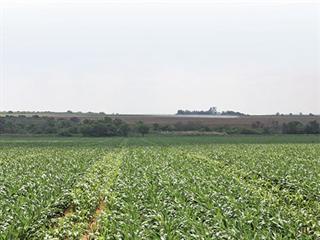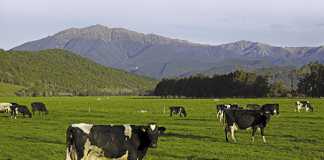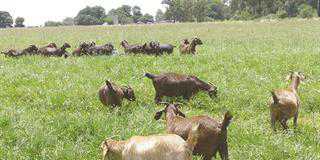
Although studies have shown that yields are more dependent on climate and soil types than on nutrient levels, farmers can nevertheless make a difference by controlling fertiliser application. “Over-application of nitrogen (N) by 10% to 20% is common, with the economic optimum rate of application largely ignored,” says Dr James Schepers, emeritus professor at the department of agronomy and horticulture from the University of Nebraska in the US.
Schepers was speaking at a recent symposium of the Fertiliser Society of South Africa. According to him, regulations now govern the use and application of N fertiliser in the US, as excess N has caused environmental problems and contaminated shallow groundwater. There is, however, no one-size-fits-all approach to fertilising. In a crop such as maize, for example, N management strategies are diverse as they depend on soil texture, precipitation patterns and amounts, irrigation, input costs and environmental considerations. Schepers says that adding manure to lands complicates the situation as nutrient levels in manure are not measured.
Economics of N Management
The input costs of fertiliser (form, rate of application and price) have a strong influence on crop profitability. “During research at US test stations, we found the maize yield to be 6,5t/ha with no N; a maximum yield of 13,7t/ha was attained with 201kg of N/ha,” says Schepers. “Assuming the cost of N fertiliser was R12/kg and the value of grain was R2 400/ t, the net increase in yield of 7,17t/ha, attributed to the fertiliser, resulted in a net profit of R14 804/ha.
“At first glance, this high level of return on investment provides a powerful incentive for producers to apply a little ‘insurance’ N.” Schepers explains that at the point of maximum yield, each R10 spent on N fertiliser returns R61 in net profit when considering the entire 201kg/ha N application. “The other way to think about N is that the producer in this example could afford to apply an extra 1kg if it increased yield by at least 10kg/ha.” But he says this thinking may be flawed as it does not consider the progressive inefficiency of N with increased application rate.
Less is more
“For example, the first 50kg of N in this scenario provided a net return of R115 for each R10 invested in fertiliser. The second increment of between 50kg/ ha to 100kg/ha gave a net return of R79, a third increment of between 100kg/ha and 150kg/ ha gave a net return of R43 and an increment of 150kg/ha to 200kg/ha of N meant a loss of R8,30 for each R10 spent.”
The high cost of fertiliser inputs means producers are evaluating the economic risks of applying too much or too little N.
“The risk associated with 10% under-application based on the N rate that achieved a maximum yield with 201kg/ha would save R240/ha in fertiliser cost and reduce the value of grain by only R166 (69kg/ ha) for a net savings of R73/ha,” he explains.
“On the other hand, 10% over-application above 201kg N/ha would reduce yield in this example by 73kg/ ha, at a value of R175, and cost R240/ ha for the extra N. This results in a net loss of R415/ha.” Schepers concludes that the penalty for over-application would be greater than the savings associated with 10% under-application, so producers should take the appropriate action. Dr Erik Adriaanse, manager of technology at Sasol Nitro, held a similar trial in South Africa.
“Across all the test sites we found that 100kg/ha N was the threshold above which responses of more than 10% were not observed,” he explains. “Inorganic N for 100% yield varied between 70kg/ha and 133kg/ ha and for maximum yield between 93kg/ ha and 174kg/ha. These values were considered to be close to the economic optimum. “Inorganic N was carried over in the soil in a dry season, but this was never measured, so instead of just topping up the N levels, a full dose was added.”
Optimal fertiliser application
Schepers says that there are certain times when the plant needs N, but outside these periods, the N will be flushed away.
“Between 70% and 80% of N is required after the V8 to V10 growth phase and about 40% is required after silking. The environmental implications of N can be evaluated by calculating the N use efficiency (NUE) of the crop, excluding the base yield produced without fertiliser.
“This calculation is based on the amount of N taken up in the grain divided by the amount of N applied. In the case of maize, it is common to assume a grain N concentration of 1,25%. (In the trial), data for the cumulative amount of N and the cumulative increase in yield attributed to the fertiliser resulted in an NUE of 45% at the point of maximum yield and 48% at the point of maximum profitability.
“In reality,” adds Schepers, “the NUE for the last units of N applied near the point of maximum yield approached zero because the last unit of N resulted in little, if any, increase in yield and N uptake.” He says that NUE can be increased through multiple N applications because this strategy reduces the chances of early season N losses and takes advantage of adaptive N management principles.
“Synchronising N applications with crop N needs is the key to increased NUE and demonstrates environmental stewardship.” Schepers advises farmers to use crop canopy sensors and imagery, especially in fields with spatial variability and differences in yield potential. “Producers can use these tools to sense the crop vigour (biomass and chlorophyll status) and make real-time applications of liquid N fertilisers.” However, the technology is not widely used because farmers are not convinced the investment will pay off.
“But at some point, economics and management restrictions related to environmental stewardship will be imposed that would necessitate adaptive N management,” concludes Schepers.
Email Dr James Schepers at [email protected].













